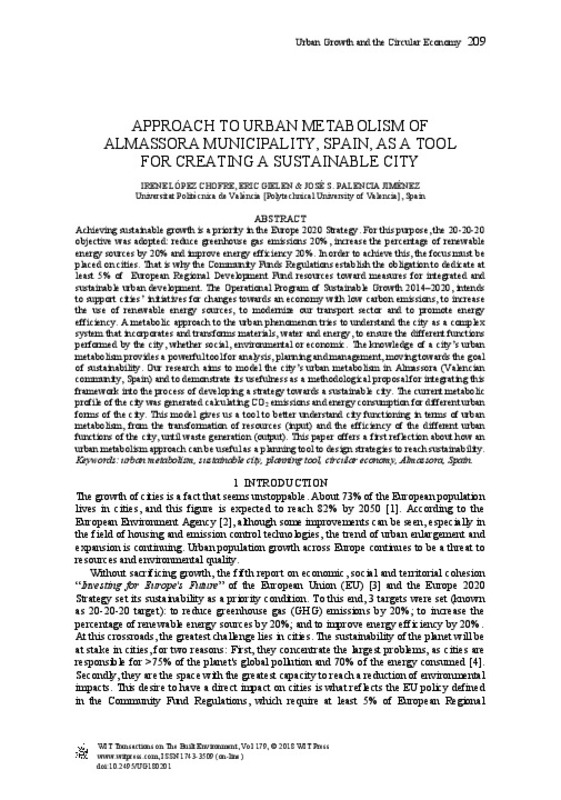JavaScript is disabled for your browser. Some features of this site may not work without it.
Buscar en RiuNet
Listar
Mi cuenta
Estadísticas
Ayuda RiuNet
Admin. UPV
Approach to Urban Metabolism of Almassora Municipality, Spain, As a Tool for Creating a Sustainable City
Mostrar el registro completo del ítem
López Chofre, I.; Gielen, E.; Palencia Jiménez, JS. (2018). Approach to Urban Metabolism of Almassora Municipality, Spain, As a Tool for Creating a Sustainable City. WIT Transactions on the Built Environment (Online). 179:209-219. https://doi.org/10.2495/UG180201
Por favor, use este identificador para citar o enlazar este ítem: http://hdl.handle.net/10251/137578
Ficheros en el ítem
Metadatos del ítem
| Título: | Approach to Urban Metabolism of Almassora Municipality, Spain, As a Tool for Creating a Sustainable City | |
| Autor: | López Chofre, Irene | |
| Entidad UPV: |
|
|
| Fecha difusión: |
|
|
| Resumen: |
[EN] Achieving sustainable growth is a priority in the Europe 2020 Strategy. For this purpose, the 20-20-20
objective was adopted: reduce greenhouse gas emissions 20%, increase the percentage of renewable
energy sources ...[+]
|
|
| Palabras clave: |
|
|
| Derechos de uso: | Reserva de todos los derechos | |
| Fuente: |
|
|
| DOI: |
|
|
| Editorial: |
|
|
| Versión del editor: | https://doi.org/10.2495/UG180201 | |
| Tipo: |
|









